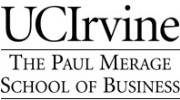Too often video game marketing is all about creating the big splash. How do we generate consumer buzz and awareness leading up to the game's release? While this is incredibly important part of the marketing plan, the area that is oft forgotten is the "how do we generate bonus sales after the release period (the 3-6 month window after the release)?" That is why you often see the sales graph for video games having three distinct stages - 1) the bulk of the sales occur very early; 2) a dramatic drop; and 3) trickle of sales for a period.
THQ (especially THQ kids) is masterful at stage 3. Looking at their sales graph, you see a series of peaks scattered through the 3rd stage where minor marketing strategies deliver increased sales and solid returns for the added expenditures.
Let's look at the example of EA's Harry Potter: Goblet of Fire compared to THQ's Cars. It is safe to say that both of these franchises are popular, but I think it is fair to say Harry is more popular. The Cars video game received a slightly higher rating than Harry (gameranking.com has it at 71% to 68%). Overall, I say its a push and these games should perform equally well. Let's see...
The graph below details their monthly unit sales after their release (data taken from NPD). You can see they both start pretty strong then drop off (Harry's first peak is higher than Cars). But look at how they perform after month 6! Harry levels to around 10,000 units per month and slowly declines to zero. Cars declines; then around Christmas it shoots up to a point even higher than the initial release; then it declines to a level just above Harry's sales; and it even experiences another small peak around a year after the initial release. The final results are clear. Despite having a superior brand and being on the market for an additional 6 months, Cars has outsold Harry Potter by a ratio of 2:1.

Now, admittedly the Harry Potter game was critically reviewed as lesser than the Cars game. And we could argue that because Harry Potter was released in November, it could not take advantage of a Christmas bump 6 months after release, but does that really explain the 2:1 margin in unit sales? I argue that it doesn't. I think it demonstrates THQ's understanding that video game sales go on beyond 6 months from release and a marketing strategy that accounts for these opportunities beyond a simple price cut can reap big rewards.


No comments:
Post a Comment